To be a Gator in ’68
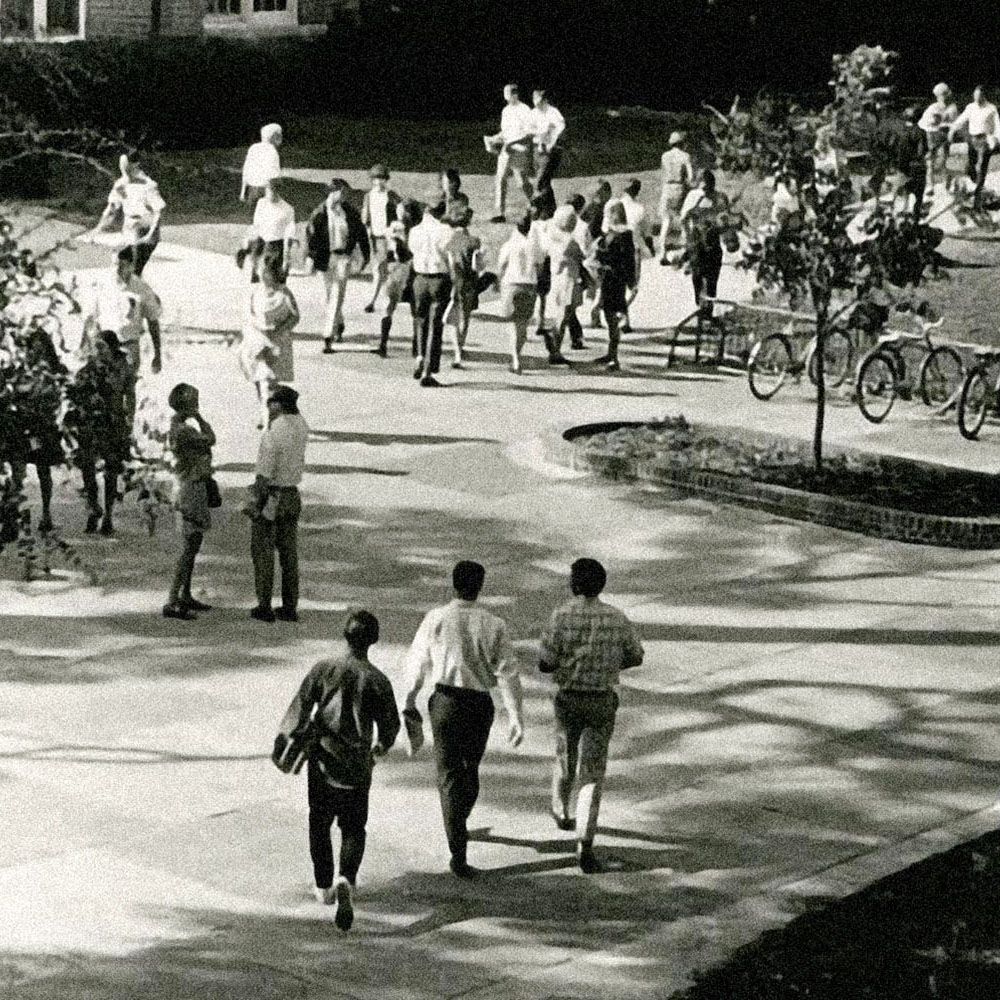
It’s the year 1968 and your parents are driving you to Gainesville in their beat-up but sturdy station wagon to drop you off for your first semester at the University of Florida. You hear your parents discussing the Vietnam War and the upcoming Democratic Convention, but your thoughts are elsewhere. You’re thinking about whether or not you’ll get along with your new roommate, how many times you’re going to get lost during the first week of classes and what your new life will be like in Gainesville. You hum along to The Beatles’ new song “Hey Jude” on the radio and look out the window to see a brick tower peeking over the trees, welcoming you to your new home.
Changing Tides
Political and cultural tensions were high in the United States in the year 1968. Martin Luther King Jr. and Robert Kennedy were assassinated, North Korea seized the USS Pueblo and the Vietnam War was in full swing. This time was a transition period for the University and the school was still very much being shaped by white southern students, according to UF historian Carl Van Ness.
“The diverse university that we have today did not exist back then,” Van Ness said.
Fifty years ago, UF was much smaller and less diverse than it is today. According to university records, there were only 19,848 students enrolled that year, and the majority of students were white males. Though UF was officially integrated in 1958, there were only about 300 African American students enrolled during this time, records show. Additionally, UF had comparatively few out-of-state and foreign students. One milestone signifying progress at the university was the formation of The Black Student Union (BSU) that year. The BSU would soon grow into a powerful social organization and support system, publicly voicing the issues affecting black students on campus. BSU worked to address the lack of black faculty, lack of diversity in the curriculum and the small number of black students at the university.
Fightin' Gators
The year 1968 also saw the first black student-athletes recruited to play football, Leonard George of Tampa, and Willie Jackson of Sarasota. Representation slowly appeared in athletics, but it was not until 1971 that that the voices of minority students began to be heard on campus. That April, about 50 African American students, frustrated with the lack of faculty and student recruitment, held a sit-in at President Stephen O'Connell's office in Tigert Hall. That day became known as “Black Thursday.” Other protests followed. The university took notice of these issues, and began to actively recruit minority students and make the university more welcoming to students of all backgrounds, Van Ness said. That included UF establishing the Institute of Black Culture (IBC),which broke ground in the fall of 1971.
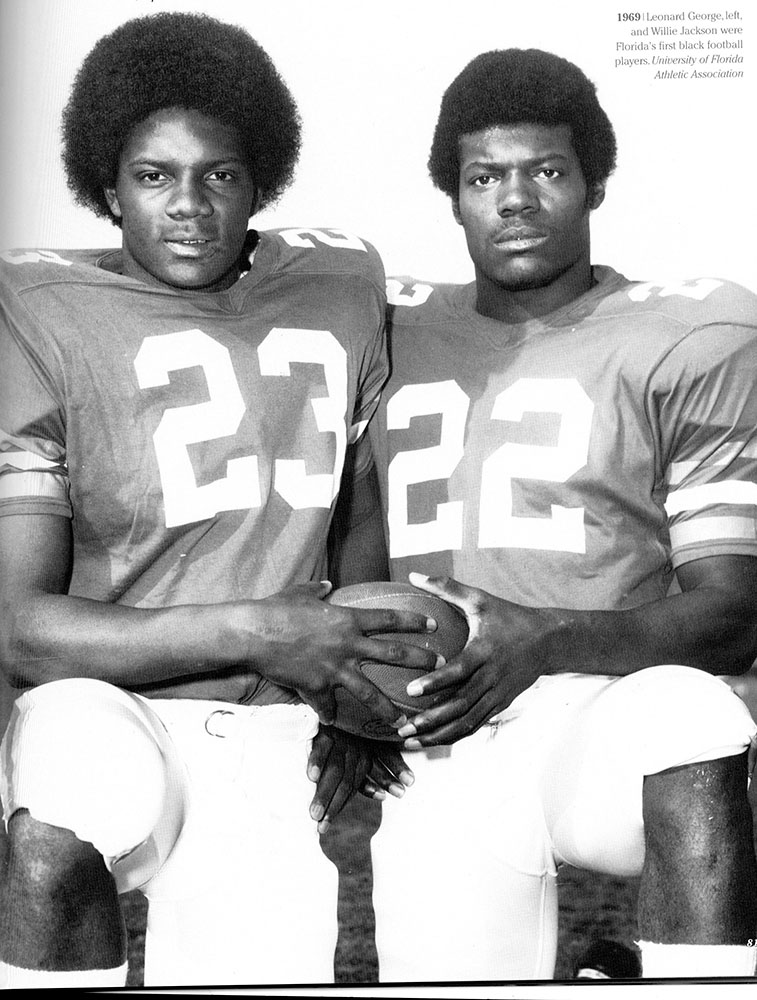
Couresy of UAA
Taking note of how much UF and society has changed since they were on campus in 1968, Bill and Janice Carr who now live in Gainesville, reminisce on both the joys and challenges of being a Gator in those days. Bill was number 51 on the football team and played alongside Steve Spurrier, while Janice was an active member of the Tri Delta sorority. They married two weeks after graduation and went on to have five children who all attended UF.
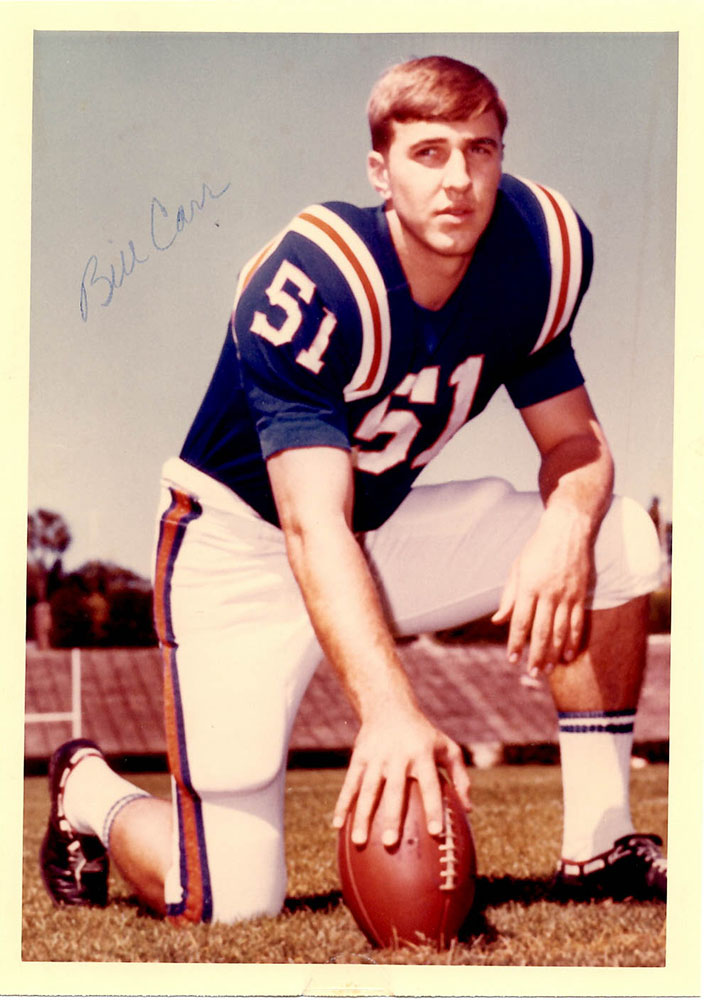
Courtesy of the Carrs
In the ‘60s, Gator football was not what it is today. The stadium was smaller, the team had less players and the physical expectations were much lower.
“The year-round training that is so much a part of football today was not so intense back then,” Bill said. “I had a more normal student experience. It is much more demanding, rigorous and structured today.”
Another monumental change for the sports world and the university was the invention of Gatorade. Bill’s football team was one of the first to sample the drink.
“I don’t know if it was the placebo effect or whether it actually helped, but in my mind, [Gatorade] made a difference,” Bill said. “I never felt waterlogged, and it helped me mentally.”
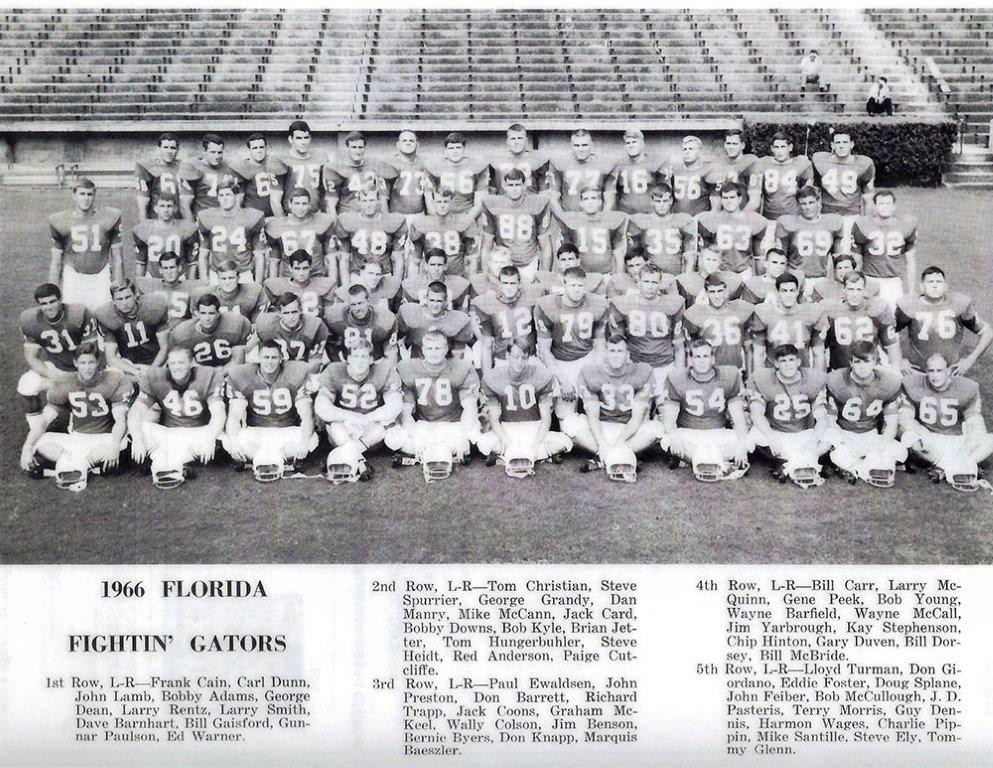
Courtesy of the Carrs
Football attire was quite different as well. Bill’s uniform was made of cotton, which soaks up moisture. By the end of the game, players wearing the uniforms were saturated with sweat, according to Bill. The cotton uniforms were not as advanced as those made of synthetic materials, worn by athletes today. Football fans would wear nice attire to games: Men wore ties and sports coats while women wore dresses with stockings to every game.
Looking back, Bill said that playing for the Gators is one of the things he takes the most pride in.
“It was a good experience and I very much enjoyed being a member of the team. It was one of the greatest honors of my life that as a senior, I was elected to be a co-captain by my teammates. That has always meant a great deal to me.”
A reality that most men had to face in the ‘60s was being drafted into the armed forces after graduation. Many who were drafted were sent to Vietnam, but after North Korea took control of the USS Pueblo in January of 1968, the U.S. began to send forces to Korea. ROTC was required for all male students at UF at that time, and Bill went beyond the basic requirements because he desired to go in as an officer rather than as an enlisted man.
“When I went to Korea, I got to work in sports,” Bill said. “It turned me on to this whole idea of working in sports and it made me consider it as a career.”
Not only is Bill a veteran and former football player, but he also served as the UF Athletic Director from 1979-86. Carr now runs a small business in Gainesville called CarrSports Consulting, which he has done for 20 years.
Dresses, Curfews and Limits, Oh My!
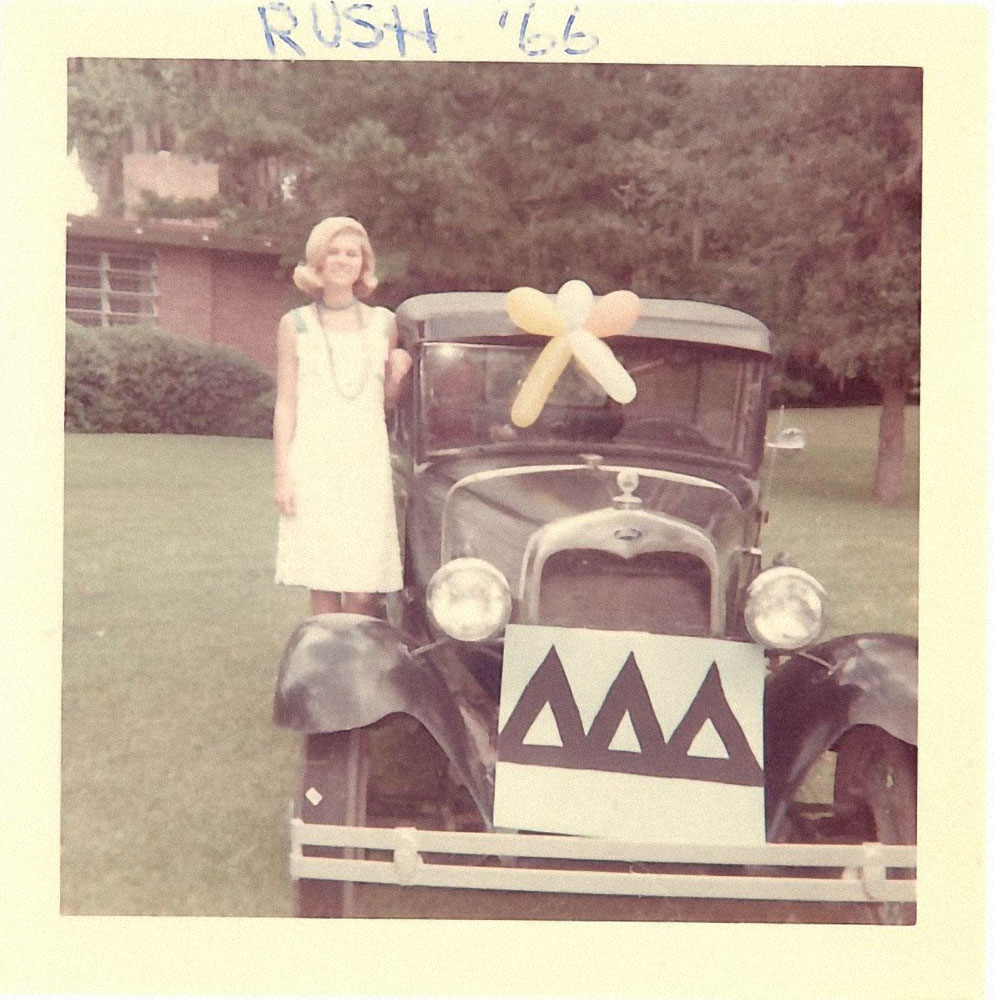
Courtesy of the Carrs
As Janice looked back on her time as a Gator, she expressed immense gratitude for all of the benefits she received through her involvement in Tri Delta.
“I really enjoyed the friendships I made through my sorority,” Janice said. “I think what being in a sorority does is number one - it makes you study, two - it teaches you a lot about people, and three- it helps you make connections and learn to get along with people.”
The Carr’s daughter was a part of Tri Delta at UF as well and Janice stated that she is grateful her daughter got to share in that experience.
According to Janice, clothing restrictions, less career options and some curfews in place were some of the differences that UF women faced, compared to now.
In 1968, you would not see women walking to class in Nike shorts and sneakers like you do today. Women dressed rather conservatively and almost always wore dresses or skirts.
“As a woman, you couldn’t wear pants or shorts unless you were going to exams,” Janice said. “We had to wear dresses. In the sorority house, we also had to dress nicely for dinner.”
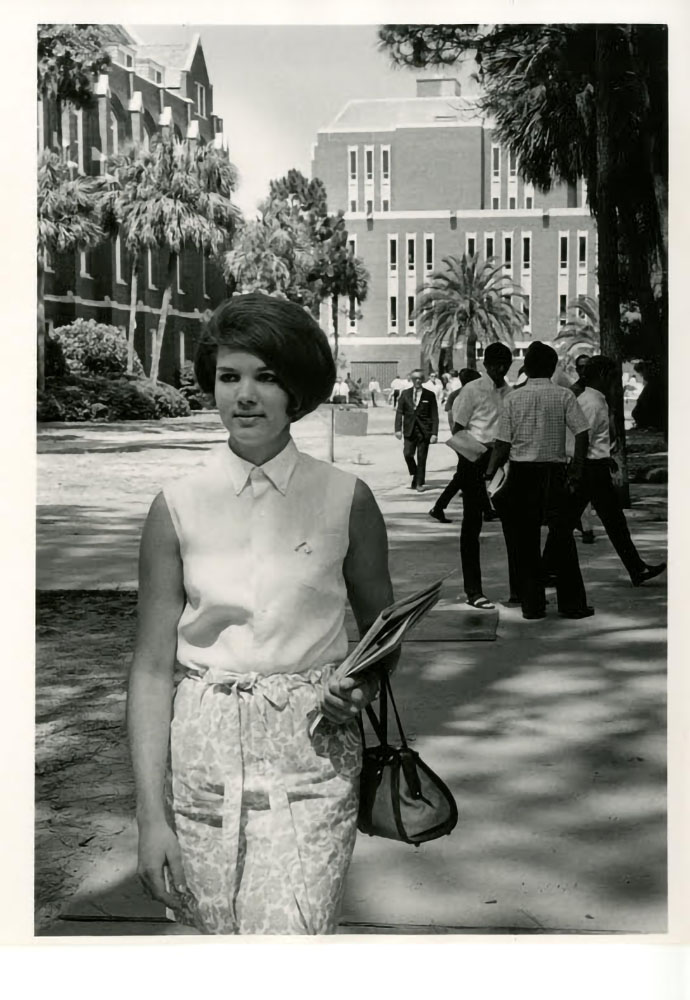
Courtesy of University Archives
According to an article written in The Alligator in September of 1968, there were curfews in place for women in dormitories. Freshmen women enrolled for their first quarter at UF had an 11 p.m. weeknight curfew and a 2 a.m. curfew on weekends. Freshmen females were also required to sign out of the dorms.
Janice received her degree in education, and stated that women’s career options felt limited at that time.
“Back in the day, for women, your choices were elementary education or nursing,” Janice said. “It just wasn’t on our radar that you could go into something else. I only knew of one or two women that went into business.”
Student Life
The Carrs noted how much technology and student life had changed at the university since ‘68. When they were in school, there were no cell phones, no laptops, and there was limited air conditioning available, they said. Students went out on dates frequently and used payphones to communicate as opposed to communicating through text or Tinder as many millennials do today.
“Where I lived in Sledd Hall, there was one room with athletes in it on every floor,” Bill said. “In my room, there were three of us, and in the hallway right outside, there was a pay phone. We ended up answering the phone frequently because no one else would, so it was quite a nuisance. It was ten cents a call, unless you had the skill of putting a nickel in and hitting it just right to jimmy the phone and get a call at half price.”
It is likely that current UF students have much healthier lifestyles than students did in ‘68. Students drank a lot of soda and smoked cigarettes regularly. While neither of the Carrs smoked, they stated that smoking was very common and that people could smoke almost anywhere on campus.
“Smoking was so much more prevalent then,” Bill said. “Many people who were educated indulged in smoking, while today the number of smokers who are college graduates is very small.”
Another aspect of student life that has shifted dramatically over the years is the political involvement and awareness of UF students. Though there were some political demonstrations on campus in 1968, most students were not in tune politically, it seems. Students watched much less television and did not have easy access to information via the Internet. The Carrs stated that they wished they had been more aware during this turbulent time.
“To our chagrin, we missed opportunities to participate in civil rights,” Bill said. “It's a lot harder for students to be ignorant today because of social media platforms. You had to make the effort to be informed back then.”
As the Carrs look back on their time at UF with fondness and gratitude, they are also looking ahead, as they are serving on the planning committee for the Grand Guard reunion for the class of 1968. The event will take place November 15-17. The event will allow alumni to connect with old classmates, get special tours and participate in a ceremony honoring their achievements and involvement.
One aspect of student life that hasn’t changed much is the social time students spend in their dorm common areas. One alumna who attended UF in ‘68 and often spent time socializing in her dorm is Virginia “Ginny” Dumas Williams. It was through her time spent there that Williams met her college sweetheart.
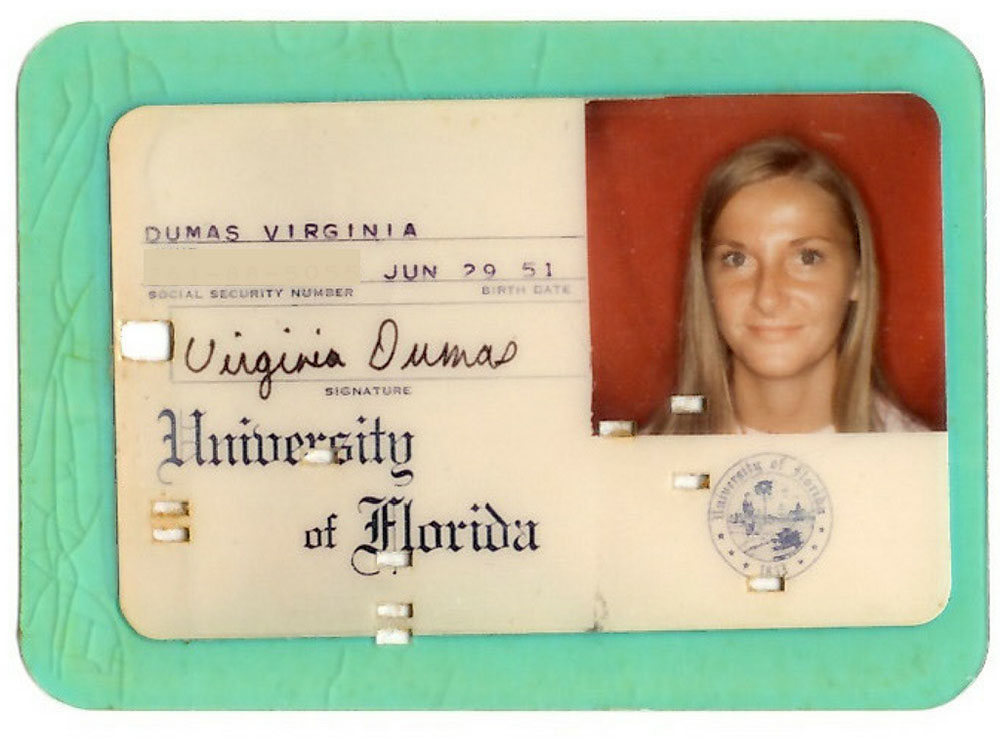
Courtesy of Virginia Dumas Williams
“We met playing Pinochle [card game] in the Beaty Towers common areas,” Williams said. “People would get together there often to spend time with friends and meet new people.”
That one card game was the start of what little did she know, would be a long line of Gators. Both of Williams’ children attended UF and two of her grandchildren are now studying here.
Sadly, Williams passed away on July 13, at the age of 67, surrounded by her loved ones. She was an accountant, a piano player and an active member of her church. Her family said that she touched the lives of all who knew her and is leaving behind a Gator legacy.
Gainesville and the University of Florida have advanced tremendously over the past 50 years. With breakthroughs in research, championships in athletics and recently being ranked a top 10 public university nationally, UF continues to evolve and progress for the better. UF’s impact extends much farther than Gainesville, touching every industry and city where UF alumni are living and working to make the world a greater place.